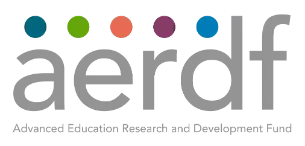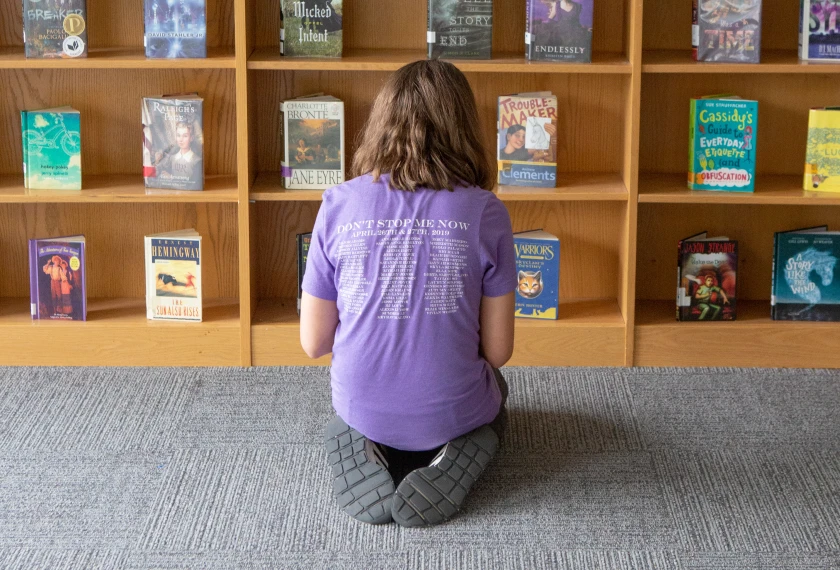Powerhouse panel of nation’s leading experts discussed the essential role of R&D in the future of education.
Our PreK-12 public school systems need powerful, proven ways to improve student learning experiences. Various proposed solutions have emerged – from scaling high quality existing tools to increasing support for ethical platforms fueled by artificial intelligence. When it comes to student well-being, these and other approaches should all be on the table. While doing so, we must address a longstanding challenge: teaching and learning solutions developed today are often created without students’, educators’, or administrators’ involvement. As a result, these well-intended solutions are disconnected from current classrooms. And too often, new discoveries in student learning are siloed from classroom-ready solutions.
To accelerate progress, we need new ways to support and develop PreK-12 learners. Yet only a fraction of the federal budget is dedicated to research and development (R&D) in education.
“The moment we’re in really demands a new nimbleness and creativity in how we address some of our biggest challenges,” said Roberto Rodriguez, Assistant Secretary of Planning, Evaluation, and Policy Development for the U.S. Department of Education. “We need to marshal the will to invest more in R&D in education to move our country forward. We can’t afford to not do more R&D in education.”
On May 2, Advanced Education Research and Development Fund (AERDF) gathered a powerhouse panel of R&D leaders to discuss this pivotal moment. Rodriguez delivered the opening keynote, then participated in a panel conversation with Auditi Chakravarty, CEO of AERDF; Dr. M. C. Brown II, Executive Director of the Payne Center for Social Justice at the Thurgood Marshall College Fund; and Joshua Elliott, Chief Scientist for Renaissance Philanthropy and Co-Director, Brains Initiative at Speculative Technologies. The panel was moderated by high school seniors Malcolm Fleming and Medina Alibasic.
Rodriguez said young people need to prepare for the demands of a new digital economy—while making up precious instructional time lost during the pandemic and overcoming social and emotional barriers to learning success.
“All of this requires us to build an evidence base and to lean into more innovative ways to support student learning and success,” Rodriguez said. “We’re not going to address big, dynamic challenges unless we design differently.”
Panelists had specific ideas about how R&D could reshape the future in bold and promising ways. They said:
R&D must be inclusive.
“The conversation around R&D in education needs to be grounded in the needs, voices, perspectives, and experiences of those working in the field,” Rodriguez said. “There’s so much opportunity in bringing research, policy, and educational practice together.”
Ideally, he said, educators, researchers, and developers will work hand-in-hand to create and scale new learning systems. And every student and school will have the resources to participate in innovation and evidence building.
“We have to ask ourselves, ‘Who are we inviting to the table to participate in innovation?’ We can address these challenges if we’re more open and intentional about being inclusive,” Rodriguez said.
“We can’t do this work alone,” Chakravarty agreed. “It’s important to bridge the gaps between research and practical implementation.”
R&D can close long-standing equity and opportunity gaps.
Brown sees this moment in education and R&D as an opportunity to “double down” and align, so every student receives high-quality, relevant learning. Educational breakthroughs can create a more inclusive system that can be scaled for all learners to succeed.
“There are those who are thriving and those who are not,” Brown said. “Shifts in American culture, machine learning, and our growing dependence on technology have made this a critical moment—not just for education, but for our national way of life.”
The nation needs R&D to uncover breakthrough transformations in learning and teaching and close long-standing inequities.
Advanced Inclusive R&D will accelerate progress for everyone.
All students benefit when R&D is grounded in the science of human learning and development and educational equity.
“AERDF is deeply invested in developing solutions for Black and Latino learners and learners who are experiencing poverty—populations that are typically underserved by traditional education systems,” Chakravarty said. “But educational R&D yields benefits for every learner.”
“The goal is to generate breakthrough insights and technical capacities that change teaching and learning in multiple ways,” she said. “We need new and different knowledge tools, products, and ways of approaching teaching and assessing.”
“If we do that,” Rodriguez said, “we will see a more inclusive system that can be scaled for all learners to succeed.”
Technology has a starring role in the future of education—and not just in classrooms.
“We have to take a more hands-on approach to innovation, education, and technology,” Rodriguez said.
He wants to blend technology in new ways to increase learning outcomes—and to accelerate research and collaboration. Technology can change how we test, validate, and scale innovations in education. And it can connect the research community to leaders in classrooms, instructional design, and product development.
“Right now, we have small pockets of innovation here and there across the country. Let’s think about how we can scale that,” Rodriguez said. “What if we were able to embrace innovation in all corners of our country? We need to support knowledge building and knowledge sharing across our system in a bigger way.”
People are irreplaceable, even as technology proliferates.
Successful R&D programs need “fantastic people with big ideas, vision, and creativity,” Elliott said.
People need space, resources, and the authority to do “big and ambitious things.” If everyone agrees your program will work, then you might not be thinking big enough to uncover transformational change, he suggested.
Elliott said it takes special leadership qualities to coordinate complex programs that advance the social good. Program leaders have to drive teams toward goals that are “just beyond impossible.”
“It’s massively challenging because every institution has completely different incentive profiles, motivations, time scales, and limitations. It’s also extremely rewarding,” Elliott said. “We have to stay focused on the people, the soft skills, and the ambition.”
Educational R&D is a national imperative.
One could argue that all our national priorities are dependent on how well we educate students, starting right now.
“Innovation has always been at the core of our competitiveness and the core of our potential as a country,” Rodriguez said. “We need to put innovation at the core of education to get ahead. We can’t afford to be left behind.
“We have to take a more hands-on approach to innovation, education, and technology,” he said.
Watch the recording of the conversation below.
An opportunity to practice Advanced Inclusive R&D.
The panel concluded with an open invitation to work with AERDF and across the industry to pursue transformative ideas for PreK-12 education.
AERDF is currently accepting applications for a program Executive Director to lead its next initiative, which launches in 2025. The program Executive Director will design and lead an Advanced Inclusive R&D project to unlock breakthrough capabilities in PreK-12 teaching, learning, or assessment systems.
Candidates should submit an intent to apply by May 23. Select candidates will be asked to submit a recorded interview and concept paper that explains their proposal.
A full selection committee will review the applications and proposals. Eight finalists will be offered a paid, part-time fellowship to refine their ideas into an actionable program. During that time, they’ll receive personalized support and feedback from AERDF, funders, and potential partners.
At the end of the fellowship, one candidate will be offered the program Executive Director position to pursue their audacious idea.
The full job description, application guide, and applicant resources are available at https://aerdf.org/prove-the-impossible/.
Chris Liang-Vergara and Kyla Haimovitz are hosting office hours throughout May to answer questions about the position and the application process. Scheduling instructions are in the FAQ.
Watch the replay of the question and answer session about the program Executive Director application process below.



